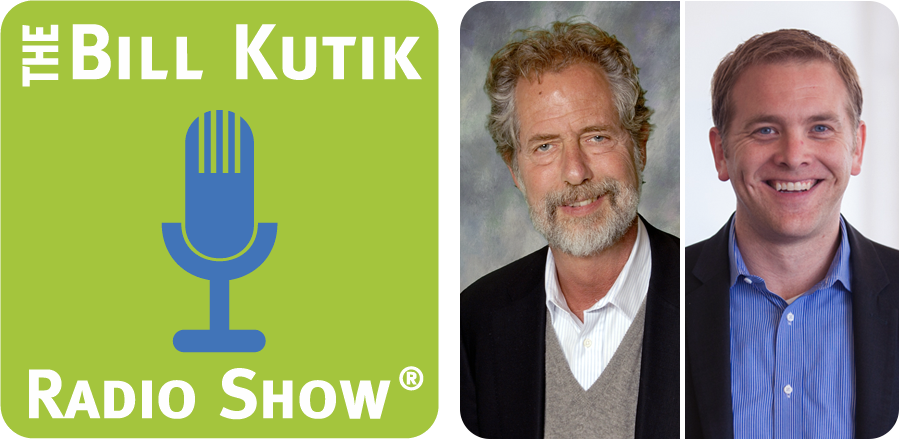 Entelo CEO Jon Bischke spoke with HR pro Bill Kutik to discuss how predictive analytics is disrupting the future of social recruiting, and why smaller companies are leading the pack.
Entelo CEO Jon Bischke spoke with HR pro Bill Kutik to discuss how predictive analytics is disrupting the future of social recruiting, and why smaller companies are leading the pack.
If you weren’t able to tune in for the live event on the Bill Kutik Radio Show, click now for the on-demand audio! Listen while you work. If you can't multi-task for 20 minutes to hear a great conversation, we pulled out a handful of Jon’s key takeaways for you to read.
Broadcasting your job on social media is not social recruiting.
Since the popularity of social networks like Facebook and Twitter started picking up the pace in the early 2000s, the buzz phrase “social recruiting” has been equally praised as a trending, effective way to connect with qualified candidates becoming more active online.
And while some recruiters may look to their company’s online profile as an appropriate channel for sharing open job opportunities, many of them aren’t taking the next step in nurturing a relationship with talent.
“Social recruiting is more encompassing. What differentiates social networking from posting status updates is more information to connect with people,” Bischke said. Zappos notably did away with their job postings, and are looking to social networks to find candidates, creating a two-way line of communication that allows the company to establish their employer branding while sourcing and engaging qualified talent.
It’s less about blasting your jobs through your networks and more about using data from those networks to find more information about a candidate, better engage with them, and develop connections.
Say hello to the new resume — your digital footprint.
“If you could hire an engineer and all you knew about this person is they either have a CS degree from Stanford, or a 100 followers on GitHub, who would you hire? I’ve found most people would take the engineer on GitHub,” Bischke said.
Candidates’ academic credentials, at one point, were one of the most important factors in qualifying candidates, but with the rise of the online professional network, one’s work product and portfolio is the modern day credential. Talent is now qualified based on what they’ve created, rather than what they look like on paper.
“People are taking their work product to the internet. It might be an engineer on GitHub or a designer on a site like Dribbble. The potential is for them to be found not only on their resume, but also on this body of work they were putting on the web.” Candidates are often qualified based on their resume and web presence, but “if your web presence gets robust enough, it could actually displace your resume.”
Social recruiting has the potential to disrupt traditional education.
And it probably already is.
If universities pride themselves on giving students a stamp of approval in the form of a degree, social recruiting can be a “healthy disrupter” in the education space, giving leverage to candidates who have online portfolios over those who let their education speak for itself – simply because a portfolio offers a tangible, accessible, public proof of a candidate’s skills.
“If there are these metrics of approval the equivalent of the Facebook Like button for work product that people are putting out there, I think thats where recruiters can start to parse this,” Bischke said.
Recruiters who may not be familiar with learning code or what defines good code from bad code can take a look at candidates’ projects, how their peers are critiquing and approving their work, and using that to frame their discussion around hiring a candidate.
Predictive analytics can give companies comprehensive information on future hires and current employees.
The amount of data in existence has doubled every two years and could increase tenfold, from 4.4 trillion to 44 trillion gigabytes within the next decade.
Translated: There’s a lot of information floating around the web for the recruiting industry to take advantage of to help them find out which candidates they should be recruiting and which outreach approach is the most effective. Companies can also optimize all this data in the cloud to find out about their current workforce, including employee retention, performance, and how they can improve management to build and maintain a successful team.
Top companies in the sales and marketing space are already building predictive models to determine customers’ sales cycles, and decide which prospective customers to focus on, and how to nurture them to close a deal.
“Over the next decade, HR will become more forward-facing, allowing companies to go in and answer questions about the future, not just simply have a record of what’s happened in the past.”
Has LinkedIn won the battle for the recruiting space?
Not yet.
“When you think about what it takes for a company to truly become a large dominant company over many, many years, oftentimes those companies have platforms that allow innovation to happen on top of the platform,” Bischke said.
Where the disconnect lies in LinkedIn’s ability to take over the talent acquisition industry is in broad nature of their function — appealing to all professionals.
Vertical networks for candidates like GitHub, Academia.edu, or Doximity provide more industry-specific channels for talent with specialized skills. Recruiters can use these networks as a place for sourcing, attracting, and engaging talent, and building a more personalized relationship between a company and a potential hire.
“What LinkedIn needs to do is figure out ways to be more embedded in people’s workflows. That’s an opportunity that LinkedIn has but I don’t think they can do it alone. They need other people to come in and build things on top of their platform to truly get there.”
Want to learn more? Click here to listen to the interview in its entirety!

